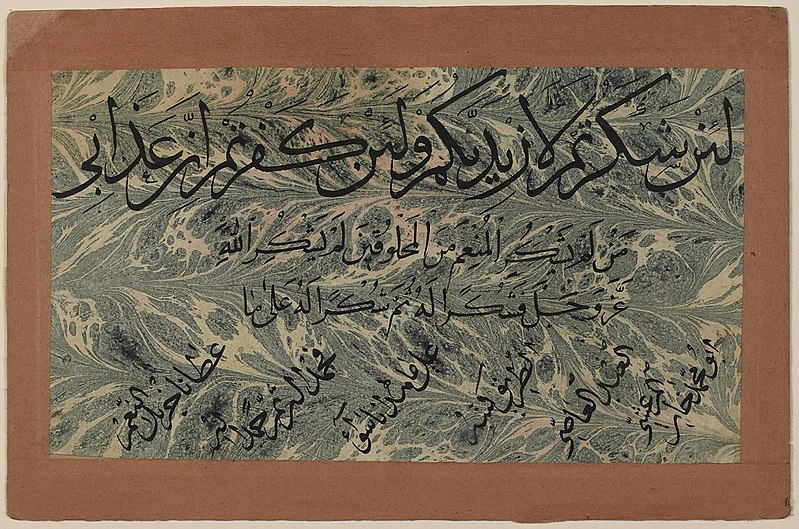Fil:Quran 14.jpg

Storlek på förhandsvisningen: 800 × 529 pixlar. Andra upplösningar: 320 × 212 pixlar | 640 × 423 pixlar | 1 024 × 678 pixlar | 1 280 × 847 pixlar | 2 932 × 1 940 pixlar.
Originalfil (2 932 × 1 940 pixlar, filstorlek: 2,28 Mbyte, MIME-typ: image/jpeg)
Filhistorik
Klicka på ett datum/klockslag för att se filen som den såg ut då.
| Datum/Tid | Miniatyrbild | Dimensioner | Användare | Kommentar | |
|---|---|---|---|---|---|
| nuvarande | 25 juni 2009 kl. 02.51 |  | 2 932 × 1 940 (2,28 Mbyte) | Calliopejen1 | {{Information |Description=Dimensions of Written Surface: 20 (w) x 11.5 (h) cm Script: thuluth, Persian naskh, and tawqi' This fragmentary calligraphic panel includes a verse from the Qur'an (14:7) and praises to God executed in thuluth, Persian naskh, |
Filanvändning
Följande sida använder den här filen:
Global filanvändning
Följande andra wikier använder denna fil:
- Användande på af.wikipedia.org
- Användande på as.wikipedia.org
- Användande på bg.wikipedia.org
- Användande på bs.wikipedia.org
- Användande på de.wikipedia.org
- Användande på en.wikipedia.org
- Användande på eo.wikipedia.org
- Användande på fr.wikipedia.org
- Användande på hu.wikipedia.org
- Användande på kk.wikipedia.org
- Användande på lt.wikipedia.org
- Användande på nl.wikipedia.org
- Användande på ru.wikipedia.org
- Användande på vi.wikipedia.org
